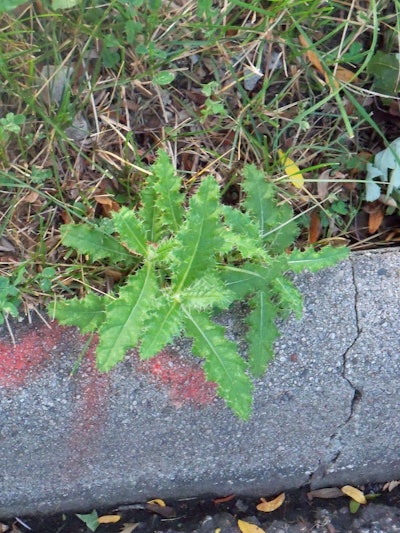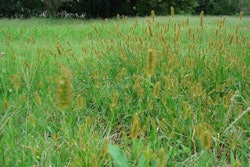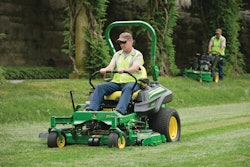
Canada Thistle is a creeping-root perennial weed and can be identified by spear-like leaves with sharp barbs that reproduces from vegetative buds in its root system. Once it flowers, the flower is purple and produced in clusters. Once the flower turns to white, the plant is ready to seed. Canada Thistle has gained a reputation of being hard to remove, and rightly so, the roots extend deep into the ground and even the smallest left over root can regrow. According to Colorado State University Extension “the horizontal roots may extend 15-feet or more and vertical roots may grow 6- or 15-feet deep”.
Many different types of areas on lawns or landscapes are highly susceptible to Canada Thistle. It can flourish in a wide range of moisture conditions and typically emerges first in the spring time, but it also grows in moderate summer temperatures with rainfall. Canada Thistle has a tendency to ‘take over’ areas where it goes untreated. Multiple weeds can grow from just one section of root.
Prevention and Treatment
The most effective form of management for Canada Thistle is to combine control methods to stress the weed. It is also important to have continued management. The roots are brittle and simply trying to dig them out, results in the roots possibly breaking and the weed re-growing. The best time to begin prevention and treatment is in June or September. In September the weed grows new shoots and begins to store nutrients to survive through the winter. Applying herbicides in September, and even into early October, is optimal it increases herbicide movement to the roots.
There are three different styles of herbicides that can be considered for removal and treatment of Canada Thistle.
- Herbicides that are applied to the leaves and move down and cause damage and kill the creeping root system such as Sharpshooter Plus, Clarity, Roundup or Milestone
- Herbicides that only kill off the leaves and top growth, but have no effect on the creeping root system such as Salvo 2,4-D Ester 700 or Glean/Telar or Fiesta
- And herbicides that are residual and will provide long term treatment such as Tordon 22K, Milestone or Transline
Canada Thistle can be mowed or cut with a sting trimmer, this stresses the plant because the roots need to continue to put out nutrients to re-grow leaves—however this is a long process and does not always kill the root. New shoots that come up in the spring and summer can be stifled by thick, healthy lawns because the seedlings are able to get enough shade.
Sources consulted-
















![Gravely Pro Turn Mach One My23 Dsc03139 Edit 1200x800 5b2df79[1]](https://img.greenindustrypros.com/mindful/acbm/workspaces/default/uploads/2025/10/gravely-pro-turn-mach-one-my23-dsc03139-edit-1200x800-5b2df791.BucBnDoN22.jpg?ar=16%3A9&auto=format%2Ccompress&fit=crop&h=135&q=70&w=240)



